How to propagate and care for zamiokulkas at home?
Decorativeness of a chic indoor plant zamioculcas increasingly began to attract the attention of amateur flower growers, and its popularity is increasing every day. The flower is suitable for growing not only in greenhouses, but also at home. Increasingly, it can be found not only in offices, but also as a decoration for an apartment window. One of the main advantages of the plant is its quick adaptation to the proposed climate and ease of maintenance.
Content:
- Indoor plant description
- What conditions does a plant need?
- Everything you need to know about a transplant
- Watering and feeding
- Reproduction of zamiokulkas
- Diseases and their treatment
- The consequences of improper care
- Pests, their types and methods of dealing with them
Indoor plant description
The historical homeland of Zamiokulkas can be safely called East Africa, and tropical forests are the natural habitat of the plant. The flower has an unusual structure: not branches, but complex leaves growing from tubers. They are the ones that attract attention with their massiveness, glossy finish and bright dark green color. The plant lives from six to ten years and the height of an average plant reaches a meter.
At home, zamioculcas does not bloom often, but nevertheless, sometimes you can observe its “flower” characteristic of aroid forms, somewhat reminiscent of a corn cob.
The flower grows and develops slowly, but its brightly colored decorative neat bush still looks very impressive. It should be remembered that the flower is poisonous, and when growing it at home, you need to place it out of the reach of children, if any. And the flower will also need to be hidden from the animals living in the family, since literally all parts of the plant are poison.
There are several types of plants, but for growing at home, zamioculcas are most often chosen zamyelistny, it is also called variegated or lanceolate. Many plant breeders are afraid to grow this tropical plant, not knowing that the flower quickly adapts to new conditions and is not picky about any special agronomic conditions.
What conditions does a plant need?
In order for the plant to delight with its beautiful outside appearance, it needs:
- Lighting... The southern window sill will be the best place to place the flower, since the zamioculcas does not suffer from sunlight. In summer, the plant feels great on a balcony or veranda, because it is also not afraid of drafts. For the harmonious development of the plant and its uniform formation, the pot with the plant should be periodically rotated around its axis, so it will receive light from all sides.
- Temperature. The plant has a rather large range of temperature tolerated by it, but still the most comfortable is from 15 to 30C. This temperature regime is closer to the natural climate of the plant.
- Humidity.The zamioculcas flower is not picky about the special humidity of the air, the usual conditions are also suitable for it. He also does not need frequent spraying or a nearby water tank. A periodic shower at room temperature can improve the well-being of the leaves, but the soil mixture during the shower must be covered with a plastic bag so as not to overmoisten it.
Everything you need to know about a transplant
When choosing a container for a flower, you need to take into account the slow growth process of the plant and do not immediately plant it in a large pot. But at its bottom, drainage (expanded clay or small brick chips) must be used, since the root system should not be overmoistened. Soil acidity should correspond to 6.0 pH.
When using ordinary lawn soil, it should be pre-steamed with boiling water or heated in the oven at 180C in order to destroy possible pests. The soil mixture for zamiokulkasu is the same as for succulent plants. If necessary, you can prepare it yourself by connecting:
- 1 part peat
- 2 parts leafy soil
- 1 part turf soil
- 0.5 parts of coarse sand
Moreover, only 2/3 of the planting container is filled with this mixture, because a well-developed root system of the plant assumes a sufficient amount of space in the pot.
You can transplant a flower every three years, since the growth rate of the plant is not very high.
The renewed container should be two to three centimeters larger both in diameter and in height. At the bottom of the container, as always, there should be expanded clay, and only then fresh soil. It is best to move the plant by the already known transfer method. To do this, you need to tilt the pot and carefully, pressing the soil, remove the flower. It is necessary to transplant this type of plants only in the phase of active awakening, that is, at the end of winter or early spring. After transplanting, the flower is rearranged in a darkened place for six to seven days.
Watering and feeding
Having transplanted a flower into fresh soil, you can not water it for almost a month, and so he will receive everything he needs from the enriched soil. In the future, watering should be carried out only after the soil dries up. It is impossible to overmoisten the soil in order to avoid root decay, but overdrying the soil is also dangerous, especially in the spring and summer period.
Watering should be moderate, and in winter, when the flower is resting, it should be as limited as possible.
Water the flower with clean, settled water at room temperature. If you water the plant with cold water, you can significantly slow down the already slow growth of the plant.
As for feeding, the zamiokulkas is fertilized mineral products for indoor plants specially designed for this species. In the fertilization process, follow the instructions on the package. On average, the procedure is performed once a month.
Reproduction of zamiokulkas
You can propagate a flower in three ways:
- By dividing the tuber. This is one of the best and safest ways. The roots are divided in half and transplanted into independent containers. The diameter of the container should be larger than the diameter of the root system, the walls of the pot should be no closer than 5 cm from the base of the flower. The height of the pot is taken taking into account the volume of tubers, the root system and, accordingly, drainage.
- By cuttings... Zamioculcas is often propagated using cuttings. A branch or a piece of it is cut off, on which one or more leaves and a new bud are left. Such a branch is kept for a day in a dark place, and it will take root more quickly. Then it is placed in moistened vermiculite to form a root. Within two to three weeks, the root will appear. It will take longer for a flower to propagate with a cutting, but more new flowers can be propagated this way.
- Sheet. This method requires special attention and time. The leaves removed from the plant should wilt a little, after which they are placed in water with fertilizers added to it.Growth stimulants can be used instead of fertilizers. Already after the appearance of a 1.5-2-centimeter root, the plant can be transplanted into fresh soil. Until the first branch appears, the flower is carefully protected from bright direct rays, hypothermia and waterlogging.
All three methods are used for plant propagation, with correct and careful actions, all methods give positive results.
Diseases and their treatment
Unfortunately, almost all plants are subject to various diseases and zamioculcas this is no exception. Its succulent foliage serves as a bait for various pests. How to overcome the main ailments and correctly respond to the signals that the plant gives us?
If the leaves of the plant turn yellow:
- The main reasons can be violations of temperature and irrigation regimes. From excessive watering, the leaves can turn yellow, fall off, and new shoots will not appear at all.
- How to fight? Stop watering immediately as the roots may rot.
Leaves can turn yellow for other reasons:
- Sunburn is possible (the flower must be removed to a place protected from light).
- Reduced plant defenses due to pests.
- Constant change of location of the flower or strong draft.
Very rarely, the leaves of the plant turn yellow and fall off for natural reasons, in other cases the flower requires improvement in the conditions of maintenance and care.
The consequences of improper care
Improper plant care can cause problems with growth, flowering and the general condition of the green mass of the flower:
- The flower grows poorly. Slow growth is almost a normal phenomenon for zamiokulkas, but if it does not grow at all and has become weak and inconspicuous, then it is necessary to find mistakes in caring for the plant. The main reasons may be: insufficient amount of nutrients in the soil (the flower urgently needs to be fed with complex mineral fertilizers), low temperature of the content can cause growth retardation (you need to increase the air temperature by several degrees), diseases and pests (diagnose a disease and spray the plant with special preparations) ... After eliminating at least the main reasons for the error in care, one can hope to improve the growth of the flower in the near future.
- Zamiokulkas "cries". This is when wet drops appear on the leaves, they are somewhat reminiscent of tears. They also appear from insufficient care. They can form from impact, falling, constant or incorrect rearrangement. You also need to react to "tears", which means that something in the maintenance and care of the flower is not suitable.
Pests, their types and methods of dealing with them
Like outdoor plants, indoor plants are also susceptible to attack by harmful insects. Sometimes they are not even visible and regular treatment of the plant with special means serves as an excellent prevention against many diseases.
The most common pests of zamiokulkas include:
- Shield. It usually occurs on the back of the leaves in the form of dark, slightly convex specks. The scale insect can completely destroy the plant, so early diagnosis is the only salvation. To do this, you need to carefully inspect the flower and monthly, in order to prevent it, wipe the leaves with soapy foam, whipped from ordinary laundry soap. The solution is applied to all surfaces of leaves and stems, after which it is washed off with warm water. The discovered scabbard is removed with a moistened sponge, after which the plant is treated with special preparations. The sooner the treatment is done, the more chances there will be for the plant to be saved.
- Aphid... Aphids can be found on indoor flowers at least as often as on garden plants. Determining the accumulation of small harmful insects is easy, but getting rid of them is quite difficult. Aphids can only be destroyed a few times. To do this, it must be sprayed with a solution (a mixture in equal proportions of soap foam and wood ash).When a zamioculcus is infected with aphids, it must be isolated from other plants so as not to infect the rest.
- Spider mite... The whitish spider web on the fold of the leaves is the spider mite. Everything needs to be washed off with a soft sponge, treated with tobacco dust, or as a last resort - insecticides.
To look after zamiokulkas at home is not difficult at all. Observing simple growing conditions, you can achieve excellent results and decorate your window with an exotic plant. The people call the flower "dollar tree" and there is an opinion that the flower brings prosperity and family well-being.
More information can be found in the video:



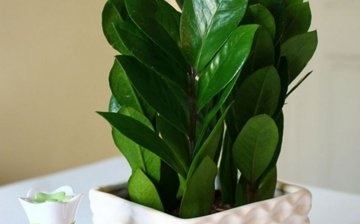
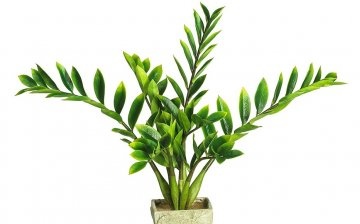
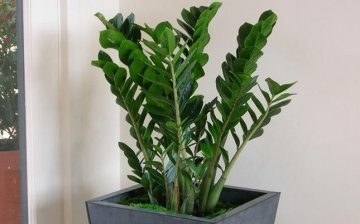
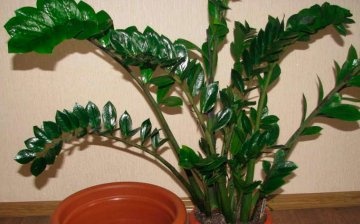
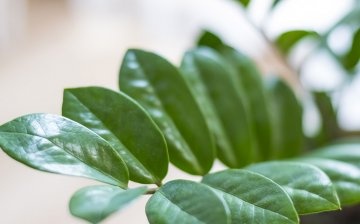

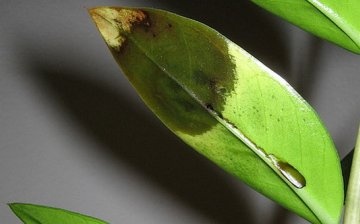
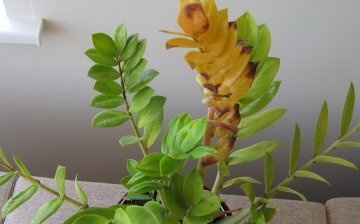
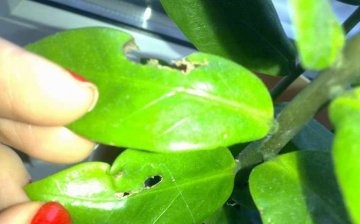










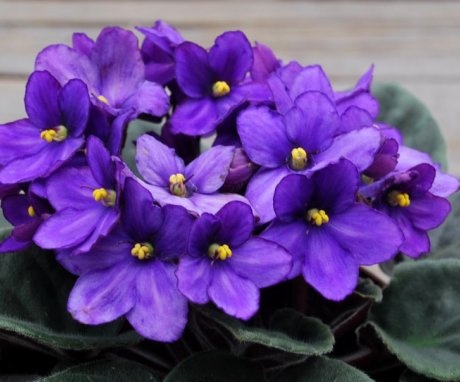

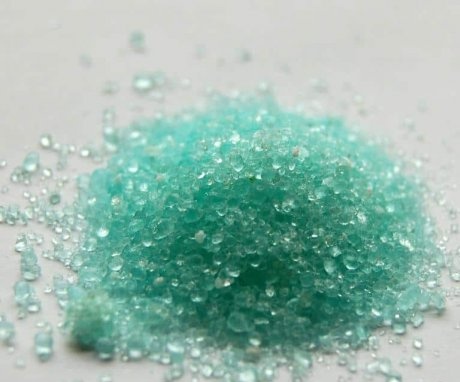
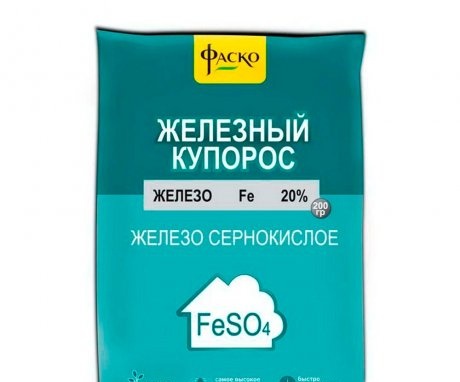
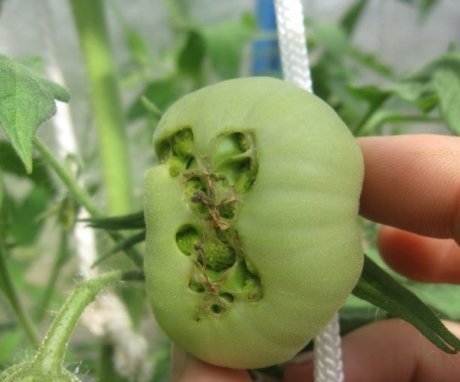
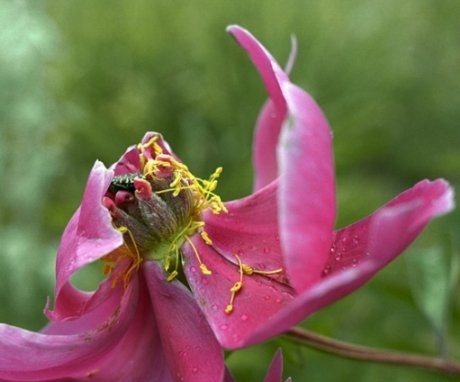
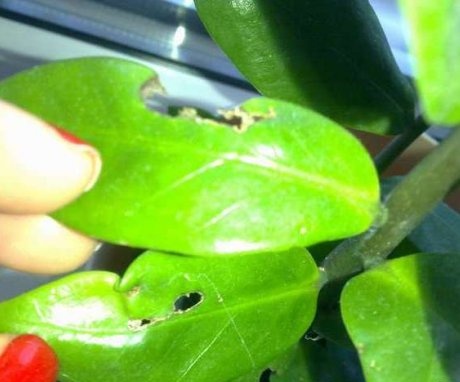
I am good at propagating this flower with a leaf. But, so that he quickly gives roots, you need to multiply in the spring. But a leaf plucked in late autumn does not give roots and after a while it rots.
Larissa, do you put a leaf in the water so that it sprouts well, or do you immediately plant it in the ground? You need to put the leaf in the water and wait until it takes root, then you will succeed.